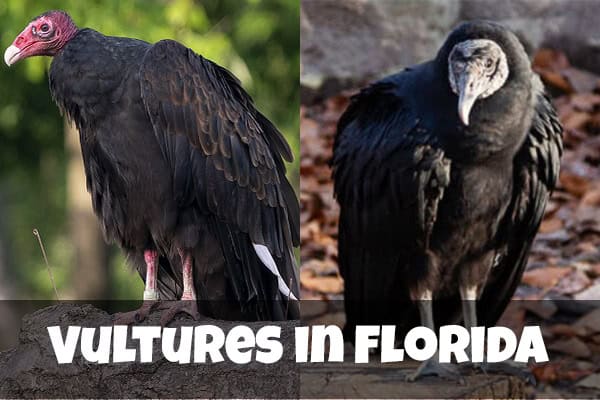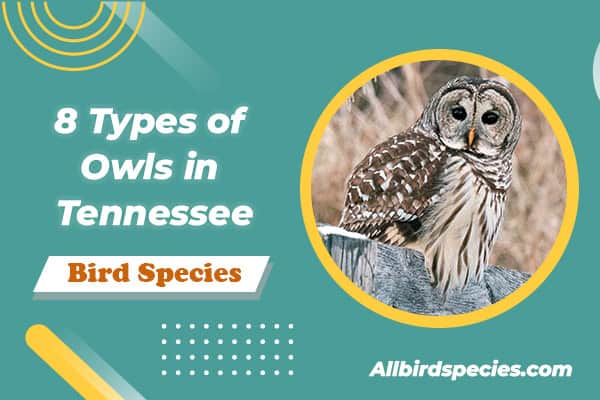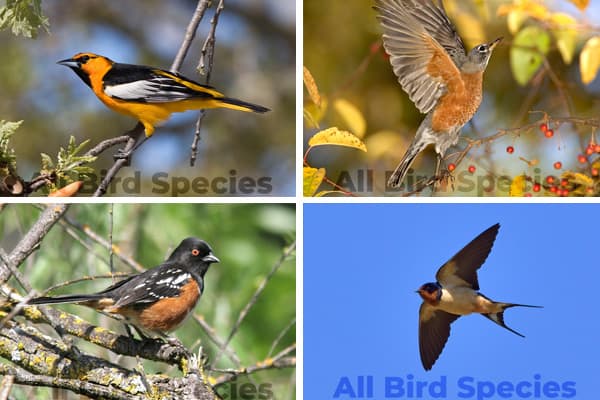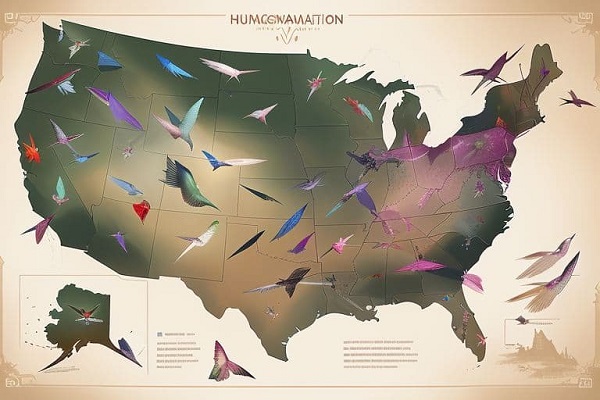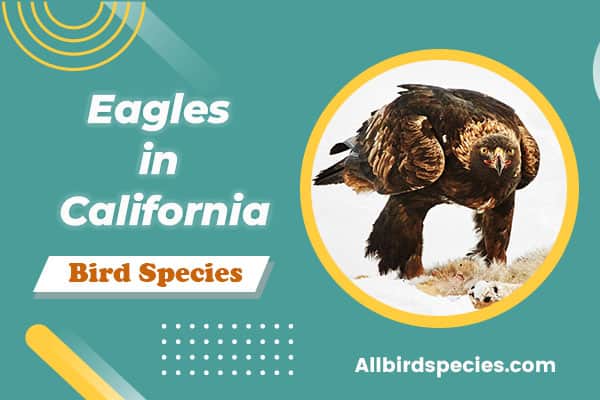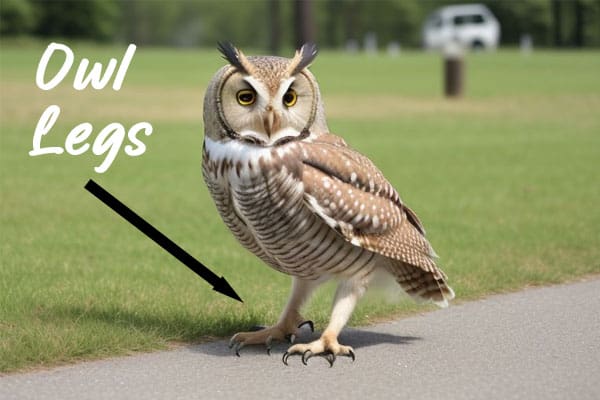2 Types Of Vultures in Florida (With Pictures)
Florida, also known as the Sunshine State, is a great place to watch birds like hawks and vultures. It’s in the southeastern part of the United States and has lots of different places where birds live, like big fields, pine tree forests, swamps, marshes, and a long coastline. Because of these different places, you can find nearly 550 kinds of birds there.
Also, Florida has some birds that you don’t see very often, but the warm part in the south has many birds that live there all the time. The state’s warm weather and different landscapes are perfect for big birds like hawks to live and do well. But the most common big birds in Florida are vultures. Out of the three kinds of vultures in North America, you can find two of them in Florida.
These vultures are part of the Cathartidae family. They’re really interesting birds with a unique look and some cool features. For example, they can’t sing because they don’t have a syrinx, which is like a voice box, so they only make hissing and growling sounds. They have no feathers on their heads, which helps them stay clean when they’re eating from animal remains.
Vultures are important because they clean up the environment. They have super strong stomach acids that kill harmful bacteria from diseases like anthrax, cholera, and botulism, stopping these diseases from spreading.
I’ll tell you more about the two kinds of vultures you can find in Florida and where to see them.
1. Turkey Vulture
- Scientific Name: Cathartes aura
- Lifespan: On average, they live for about 16 years, but the maximum recorded lifespan is 23 years.
- Size: Turkey vultures have a body length ranging from 25.2 to 31.9 inches (64 to 81 cm).
- Weight: They weigh between 28.2 to 84.7 ounces (800 to 2400 grams).
- Wingspan: Their wingspan spans from 66.9 to 70.1 inches (170 to 178 cm).
- Status: The Turkey Vulture is categorized as “Least Concern” in terms of conservation status.

The Turkey Vulture is a really big bird that likes to soar in the sky with its long wings and tail. Its wings look different from above and below; the bottom part of the wing is lighter, and the top part is darker. The bird’s back is dark brown, its belly is black, and the bottom of its tail is kind of grey.
Its head doesn’t have any feathers and is red, its beak is a light color, and so are its legs. Young Turkey Vultures have heads that look a bit red and beaks that are partly light-colored. Baby Turkey Vultures are mostly black, have wings like the grown-ups, and their heads are grey.
When Turkey Vultures are eating or near food, they make hissing sounds. If you see them flying, you might hear a whining sound.
Turkey Vultures don’t build nests like other birds. They just find a cozy spot on the ground or under something like a rock or in a cave, and they use leaves or other things from plants to make a little space for their eggs. They often go back to the same place every year to lay their eggs.
The mother Turkey Vulture lays one to three eggs, and she keeps them warm for about 28 to 40 days. After the baby birds hatch, they stay in the nest for another 60 to 84 days before they’re ready to leave.
Turkey Vultures only eat dead animals, which is called carrion. They mostly eat dead mammals, but they’ll also eat dead birds, frogs, lizards, fish, and even some bugs.
2. Black Vulture
- Scientific Name: It’s called Coragyps atratus.
- Lifespan: Usually, they live around 10 years, but some have lived up to 25 years.
- Size: These vultures are about 23.6 to 26.8 inches long (that’s 60 to 68 cm).
- Weight: They weigh between 56.4 to 77.6 ounces (or 1600 to 2200 grams).
- Wingspan: Their wings stretch from 53.9 to 59.1 inches wide (which is 137 to 150 cm).
- Status: They are not in danger of disappearing and are listed as “Least Concern” for their conservation status.
Black Vultures are fascinating birds that play an important role in our ecosystem. Let’s learn more about them!

Appearance:
- Black Vultures of florida are large birds with broad wings and a short tail.
- They are almost entirely sooty black, except for their silvery-white wingtips.
- Their head is bare and blackish-grey, while their legs and beak are pale.
- Young Black Vultures look duller than the adults.
Behavior:
- These birds are mostly silent, but they do make a raspy hiss when they find a carcass.
- Unlike other birds, Black Vultures don’t build nests. Instead, they lay their eggs directly on the ground in a depression.
- They choose spots like sand, debris, caves, hollow trees, thickets, stumps, and abandoned buildings for their nests.
- Interestingly, they reuse the same nesting sites year after year.
Reproduction:
- Female Black Vultures lay one to three eggs in a clutch.
- The incubation period (when the eggs are kept warm) lasts 38 to 39 days.
- After hatching, the nestlings stay in the nest for 70 to 98 days.
Diet:
- Black Vultures are scavengers. They mainly feed on carrion, which means they eat dead animals.
- Their favorite carrion prey includes raccoons, opossums, coyotes, skunks, armadillos, hogs, donkeys, and cattle.
- Sometimes, they even snack on chickens and fish.
- Occasionally, they go after live prey like skunks, pigs, lambs, and turtle hatchlings.
Conservation Status:
- Good news! Black Vultures are not in immediate danger.
- Their population has been increasing by about 3.4% per year since 1966.
- There are an estimated 190 million breeding individuals out there.
Challenges:
- In the past, people feared that vultures carried diseases, so they trapped, shot, and poisoned them.
- Other threats include car collisions, loss of nesting sites, exposure to chemicals like DDT, and lead poisoning.
- Thankfully, Black Vultures have made a comeback and expanded their range in the northern regions.
- Remember, these silent cleaners play a vital role in maintaining a healthy environment!
Where to Find Black Vultures In Florida
It seems like you have a good understanding of where to find Black Vultures in Florida. These birds are indeed adaptable and can be found in various habitats across the state. The locations you’ve mentioned, such as Corkscrew Swamp Sanctuary, Big Cypress National Preserve, Myakka River State Park, Fort De Soto Park, and Honeymoon Island State Park, are excellent spots for birdwatching and have environments conducive to spotting Black Vultures.
If you’re planning a visit, it’s always a good idea to check with the local park services or wildlife sanctuaries for any specific viewing guidelines or recent sightings. Early morning is typically the best time to observe these birds as they leave their roosts. Don’t forget to bring a pair of binoculars for a better view and to maintain a safe distance from the wildlife. Enjoy your birdwatching adventure!

